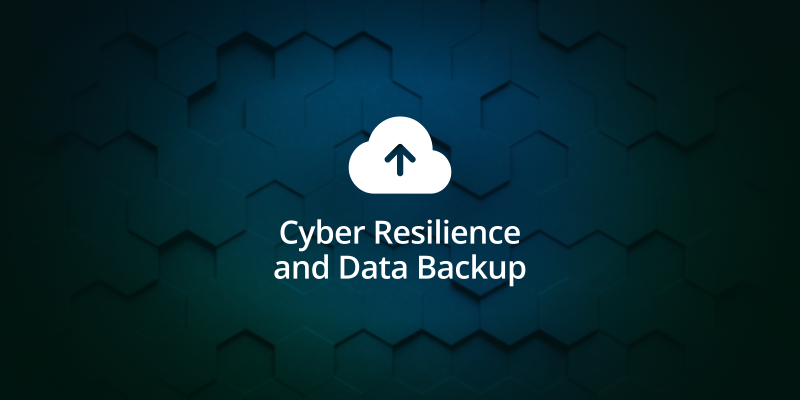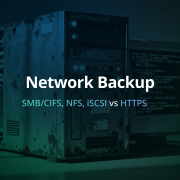
Cyber Resilience and Data Backup: The Key to Protection Against Cyberattacks
Table of Contents
- What is “Cyber Resilience”?
- The Impact of Cyberattacks and the Role of Cyber Resilience
- Cyber Resilience Process
- Data Backup as an Element of Cyber Resiliency
- Cyber Resilience and Disaster Recovery
- Xopero Software: Partner in Building Cyber Resilience
- 360° Cyber Protection
In today’s world, protecting critical data from ransomware attacks and other digital threats is an essential part of achieving cyber resilience. Prevention is key to avoiding cyber disasters, but in practice, it requires developing and implementing a detailed defense strategy based on secure backups, advanced monitoring, and scalable data recovery.
Cybercriminals often target organizations’ backups. If ransomware encrypts these backups, you may be forced to consider paying the ransom, but there is no guarantee you will recover your data. Paying ransom can also pose another problem – accusations of money laundering and losing compliance with AML regulations, and potentially leading to AML fines. Even worse, if someone gains access to a privileged user account and deletes your backups, the consequences can be catastrophic. In this article, we will discuss the concept of cyber resilience and explain why this term is gaining popularity in the context of data protection.
What is “Cyber Resilience”?
Cyber resilience is a continuous process – it requires implementation, constant monitoring, and regular testing. Data backup is the foundation of a modern security strategy in the digital world. Regularly creating backups, securing them appropriately, and having effective disaster recovery procedures are key to minimizing risk and ensuring operational continuity. Investments in these areas and in comprehensive IT support, are not only a technological necessity but also a strategic step toward protecting data and resources from growing cyber threats.
The Impact of Cyberattacks and the Role of Cyber Resilience
Cybercrime is becoming increasingly complex and frequent, leading to significant financial losses, data breaches, and customer loss. Even the best-protected organizations can fall victim to an attack. Therefore, it is crucial to implement a cyber resilience strategy that allows the organization to survive and quickly recover after an incident.
Cyber Resilience Process
Effective cyber resilience frameworks rely on vigilance and full visibility. Companies must ensure appropriate security measures to manage cyber incidents effectively, protect key assets, and overcome difficulties resulting from cyberattacks.
Key Elements of Cyber Resilience
Identification: Understanding the environment and overall cyber risk. The first step in a cyber resilience program is identifying data locations and understanding what is sensitive. It is also important to identify critical business functions and assess the cyber threats that could disrupt them.
Protection: Implementing appropriate security measures. Robust cyber resilience frameworks protect data, applications, and systems. Implementing strong protection measures for cloud, network, endpoints, and mobile devices enables an organization to defend against cyberattacks. This also includes employee training, information security policies, identity management, access control, and regular IT maintenance.
Detection: Monitoring networks to detect intrusions. Organizations must quickly detect attacks to respond and minimize damage. This point includes systems that monitor the environment for suspicious activities and malicious entities, enabling response to threats and implementation of appropriate remedial measures.
Response: Preparing an incident response plan. After detecting an attack, the organization should have a ready response plan. Planning the response is crucial to quickly and effectively minimize the impact of the incident and shorten the recovery time.
Recovery: Quick access to resources. The most important risk during an incident is operational downtime. The last step in a cyber resilience plan focuses on restoring operational normalcy as quickly as possible.
Data Backup as an Element of Cyber Resiliency
Data backup is one of the fundamental elements ensuring cyber resilience in terms of cybersecurity. Regularly creating backups of critical data and systems is key to minimizing data loss or breach. Organizations should establish backup schedules depending on the criticality of the data and business requirements.
Key Aspects of an Effective Backup Strategy:
- Backup Regularity: Creating regular backups is key to minimizing data loss. Daily backups may be required for the most critical systems, while less important data can be backed up weekly or monthly.
- Redundancy and Geographical Distribution: Backups should be stored in different locations to protect against natural disasters like fires or floods.
- Data Encryption and Security: Backups must be properly secured against unauthorized access. Encrypting data during backup creation and storage is essential.
- Testing and Validation: Regularly testing backups is crucial to ensure that data can be effectively recovered in case of an incident.
- Process Automation: Automating backup processes minimizes the risk of human error and ensures regularity and compliance with the established schedule.
Cyber Resilience and Disaster Recovery
Disaster recovery is an integral part of cyber resilience. An effective disaster recovery plan includes the procedures and technologies needed to restore data and systems to their pre-incident state. Data backup is a crucial component of such a plan, enabling quick and efficient restoration of operations.
Steps in the Disaster Recovery Process
- Situation Assessment: Quickly identifying and assessing the incident to determine the scale and impact of the disaster.
- Activating the Recovery Plan: Initiating recovery procedures according to the prepared plan.
- Data Recovery: Using backups to restore data and systems.
- Verification and Testing: Checking the integrity of recovered data and system functionality.
- Documentation and Reporting: Documenting the course of the incident and recovery actions for analysis and strategy improvement.
Cyber Resilience at Every Stage
Cyber resilience is a continuous process – it requires implementation, constant monitoring, and regular testing. Data backup is the foundation of a modern security strategy in the digital world. Regularly creating backups, securing them appropriately, and having effective disaster recovery procedures are key to minimizing risk and ensuring operational continuity. Investments in these areas are not only a technological necessity but also a strategic step toward protecting data and resources from growing cyber threats.
Monitoring and Analysis
Constantly monitoring the IT services environment is essential for detecting potential threats and responding quickly to incidents. Monitoring systems should be able to identify unusual activities and alert the appropriate persons or systems. Analyzing monitoring data helps identify trends and potential threats, allowing preventive measures to be implemented before an incident occurs.
Employee Training and Awareness
People are often the weakest link in the cybersecurity chain. Regular training and raising employee awareness about cyber threats and best security practices are crucial for building the organization’s cyber resilience. Employees should be informed about the latest threats, such as phishing, malware, or ransomware, and how to avoid them.
Updates and Security Patches
Keeping systems and applications in the latest versions and regularly updating and installing security patches are crucial for protection against known threats. Cybercriminals often exploit known security vulnerabilities, so regular updates are essential to reduce the risk of attacks.
Access and Permissions Management
Controlling access to systems and data is crucial to ensuring that only authorized persons have access to critical resources. Implementing the principle of least privilege and regularly reviewing user permissions help minimize the risk of unauthorized access.
Ransomware Resilience
Ransomware is one of the biggest threats to modern organizations. Implementing protective measures, such as advanced antivirus systems, cleanup software to reduce digital clutter, firewalls, and employee education on phishing, is key to minimizing the risk of ransomware infection. Regular data backups and testing recovery plans are also crucial to ensure that the organization can quickly return to normal operations after a ransomware attack.
Xopero Software: Partner in Building Cyber Resilience
Xopero Software is a leading provider of data backup and recovery solutions that help organizations achieve a high level of cyber resilience. We offer a wide range of products that support the creation, management, and recovery of backups effectively and securely. Xopero’s solutions are designed to meet the requirements of both small businesses and large enterprises, ensuring scalability and flexibility.
Key Features of Xopero Backup and Disaster Recovery Solutions
- Comprehensive Backup: Xopero offers solutions for backing up data from servers, workstations, mobile devices, and cloud applications.
- End-to-End Encryption: Ensuring data security with advanced encryption, both during transmission and storage of backups.
- Process Automation: Automatic backup creation according to a set schedule, minimizing the risk of human error.
- Quick Data Recovery: The ability to quickly and easily recover data, minimizing business downtime.
- Geographical Redundancy: Storing backups in different locations, including the cloud, to ensure protection against local disasters.
- Immediate Response and Control: Controlling access, backups, and roles. Equipping security teams with SLA reports, statistics, and notifications for better management and immediate remedial actions.
360° Cyber Protection
Cyber resilience is a key element of modern cybersecurity strategies, enabling organizations not only to comprehensively protect against attacks but also to quickly and effectively respond to incidents. Regularly creating backups, securing them properly, and having effective disaster recovery procedures are fundamental elements of cyber resilience. Investing in these areas, as well as constant monitoring, analysis, employee training, updates, and access management, are essential for protecting against growing cyber threats. In the face of increasingly advanced and frequent attacks, organizations must continuously improve their cyber resilience strategies to effectively protect their data and ensure operational continuity.







